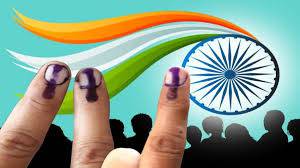Charles Boycott, who belonged to the late 19th Century, was a land agent from Ireland. The locals, who were fed up with his administration methods, decided to stop working for him and ultimately ostracized him and his services. This event made him so famous that his last name eventually found its way onto the English dictionary. The word Boycott was officially termed as - "to withdraw social relations or not buy products from a particular organization as a show of protest."
The recent hassles along the Indo-China border have made netizens from India announce their decision to publicly boycott Chinese goods. This move was appreciated as a sincere effort for showing their patriotism and support towards our armed forces. However, in reality, we all need to understand and acknowledge that an immediate boycott of Chinese goods and products is far more complex and challenging than what we visualize it to be. China is a country known for its cheap labour, well-knit ecosystem of suppliers, component manufacturers, and distributors. To add on, they are also popularly referred to as the “Global Factory,” for their lenient regulatory policies.
This boycott has dragged a lot of attention towards Chinese electronics, especially smartphones. The average Indian buyer, when looking to buy a smartphone, expects specifications such as more RAM, higher battery power, and a good camera, among others, at a lower price. The Chinese seem to have made the best out of the smartphone market since their products cost a modest Rs.10000-Rs.20000 with outstanding specifications, eventually dominating the market share by a whopping 73%. Not to forget, the recently concluded festive sales on amazon.in and flipkart.com in August indicate that despite the prevailing sentiment against buying Chinese products, the bestsellers among smartphones were Chinese brands such as Xiaomi, Oppo, and OnePlus. These brands have been a popular pick among budget and first-time smartphone buyers in India.
Though it may seem like the boycott has lost some steam, there have been quite a few noteworthy developments. Japanese companies have been offered SOP's by their government to shift their factories out of China to other countries, including India. Non-Chinese smartphone brands such as Apple, LG, Samsung, and Nokia saw a significant rise in sales during this period. Focusing more on Apple, which has so far had most of its production in China, now has two partner factories in India. The Chennai Factory has begun manufacturing the iPhone 11, which has been a runaway hit in India and all across the globe. The Cupertino-based company has also confirmed that the assembling procedure of the upcoming iPhone and iPad variants will soon begin here.
Under its Make in India campaign, the Government of India has decided to support and reform trade manufacturing policies to make it easier for non-Chinese companies to set up manufacturing operations in India. With the dawn of the digital revolution and ever-rising demand for electronic goods, the aforementioned developments will create more job opportunities and give us the satisfaction of using products made in our own country.





